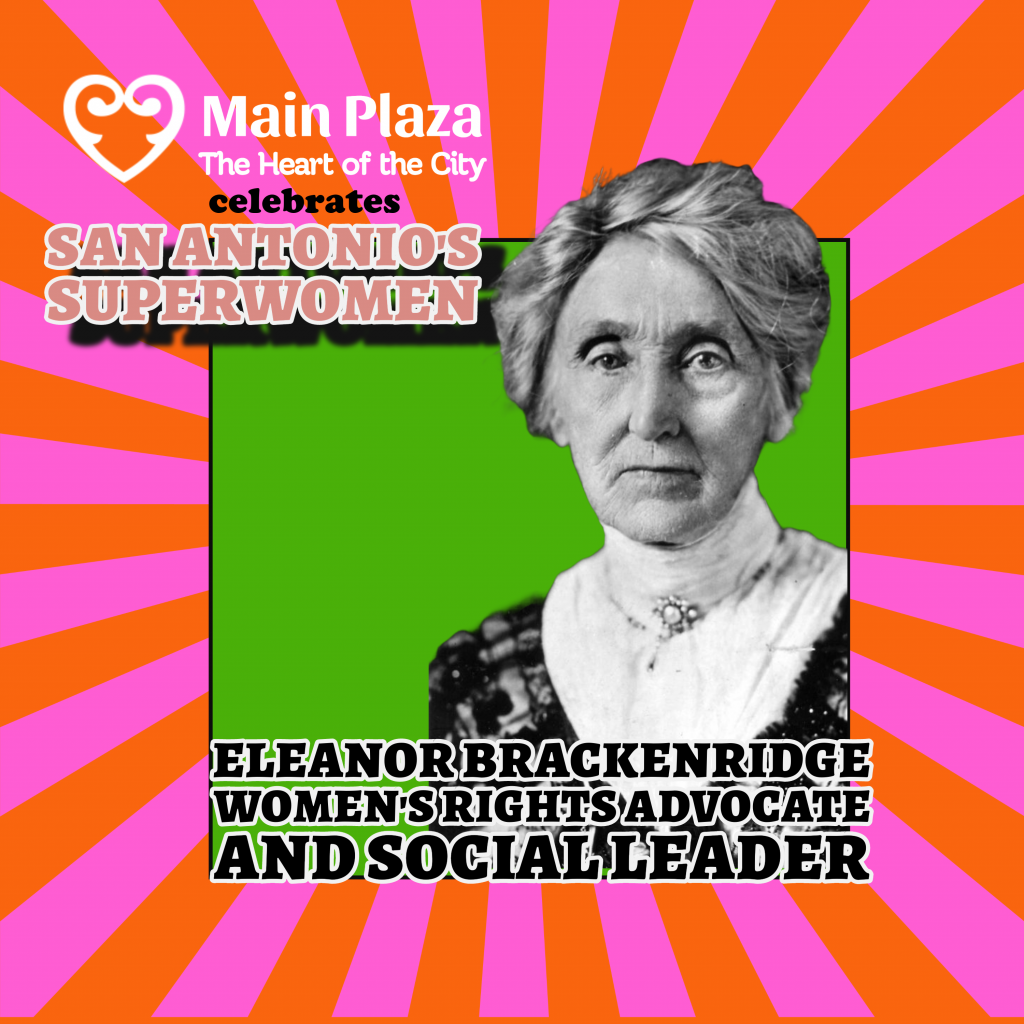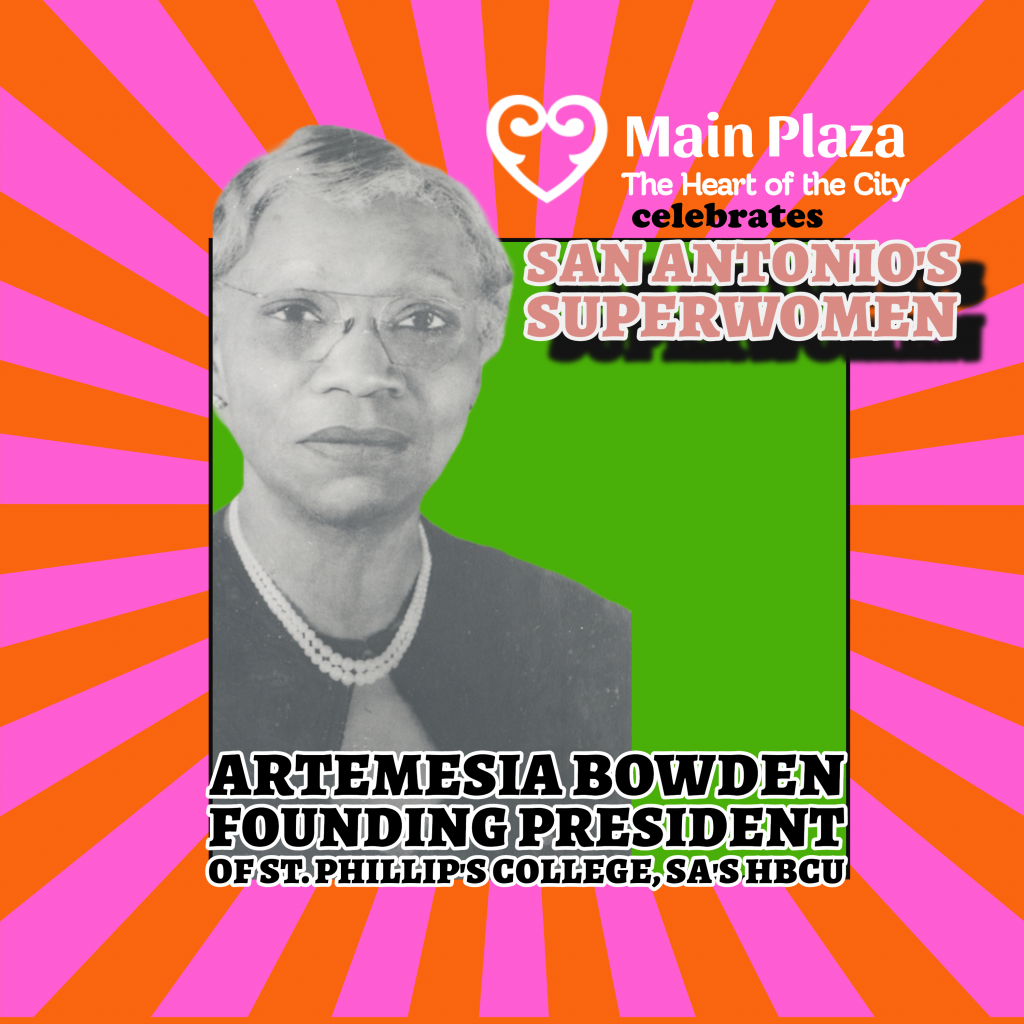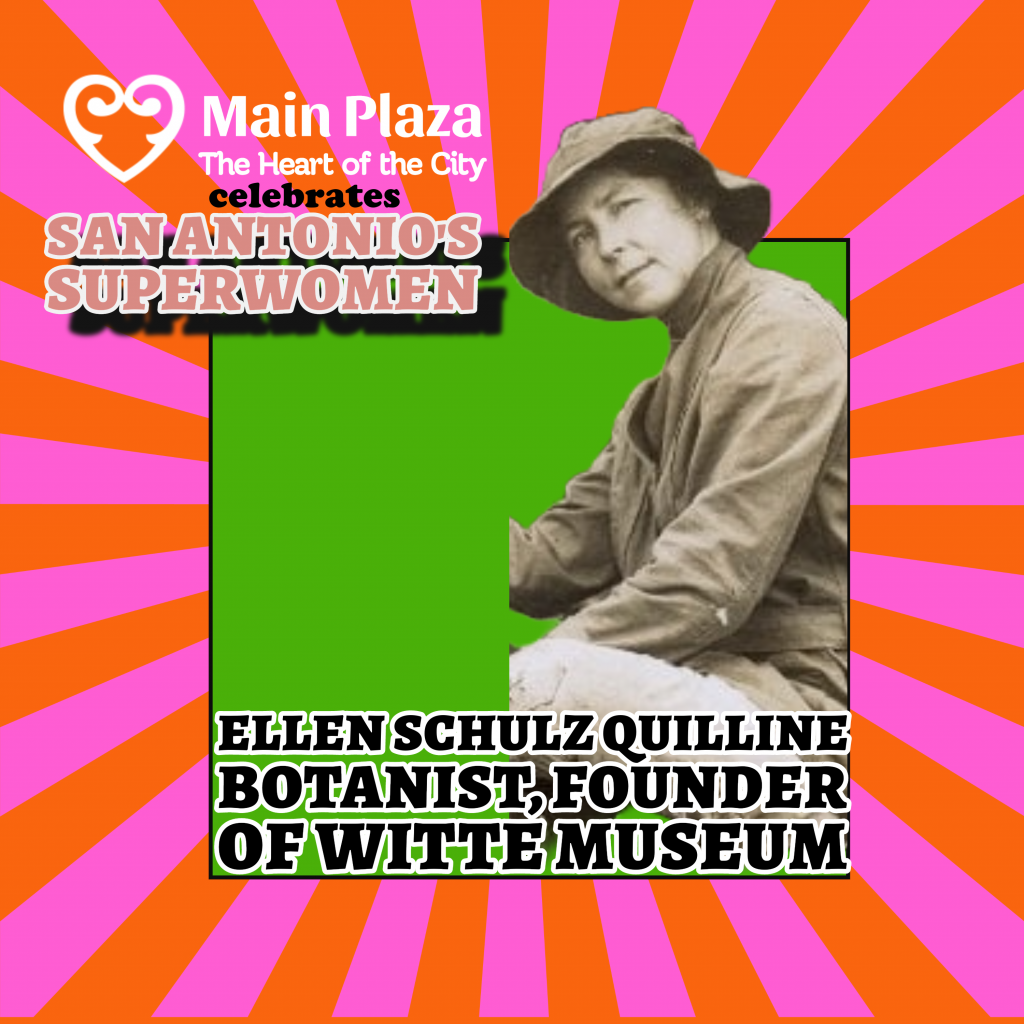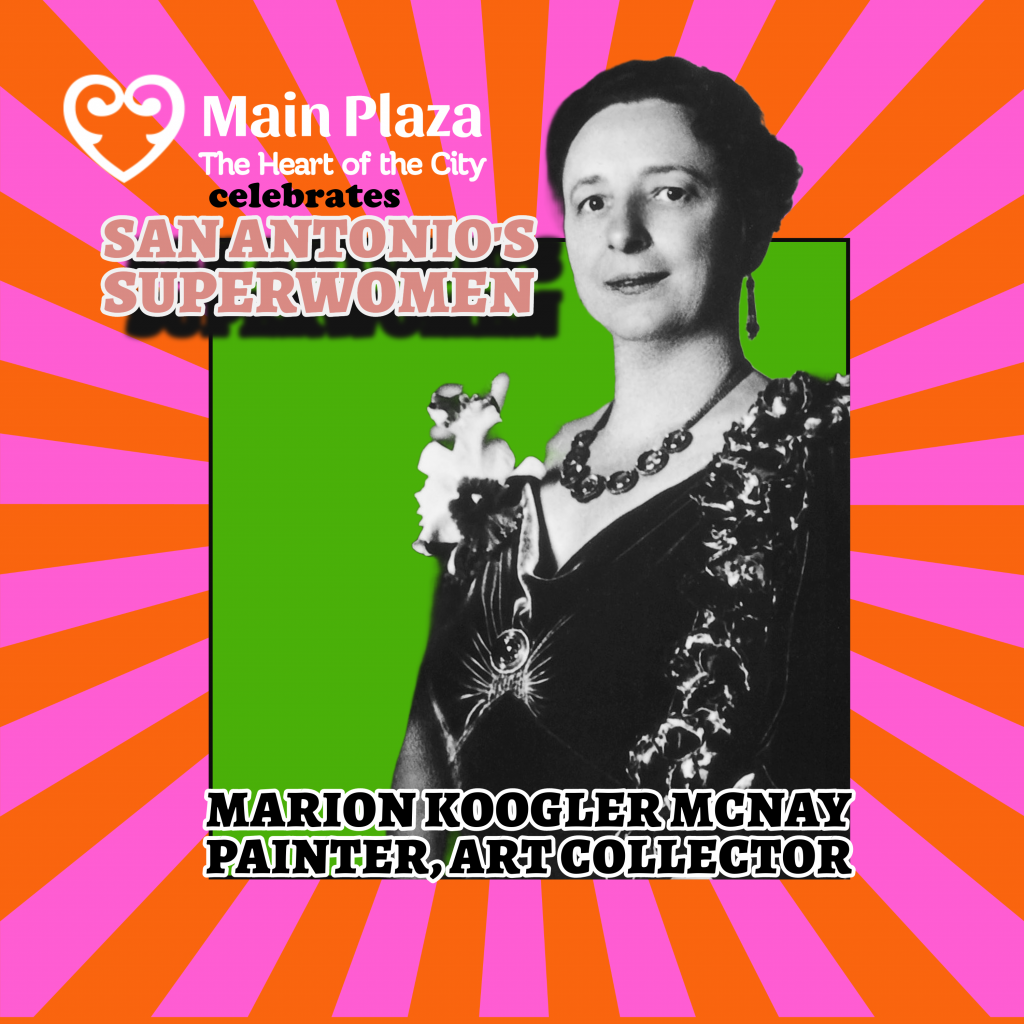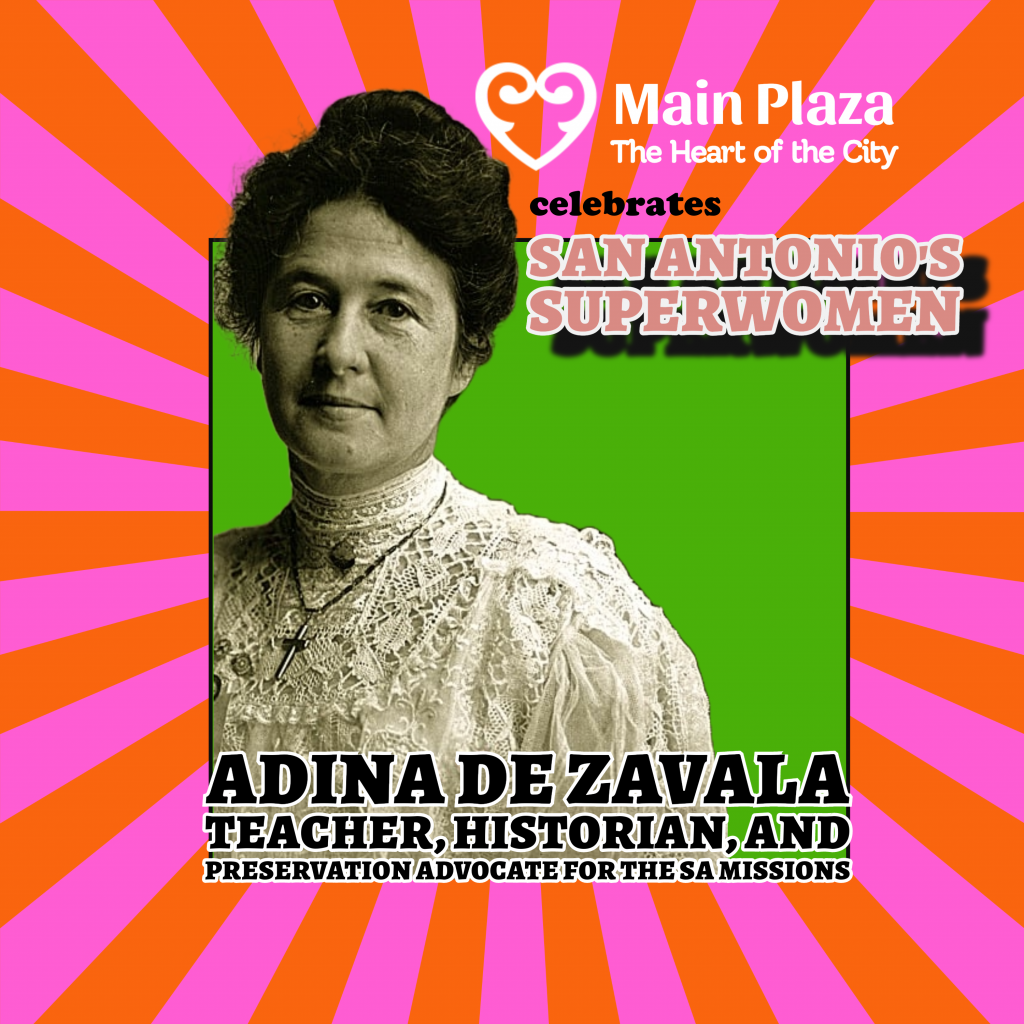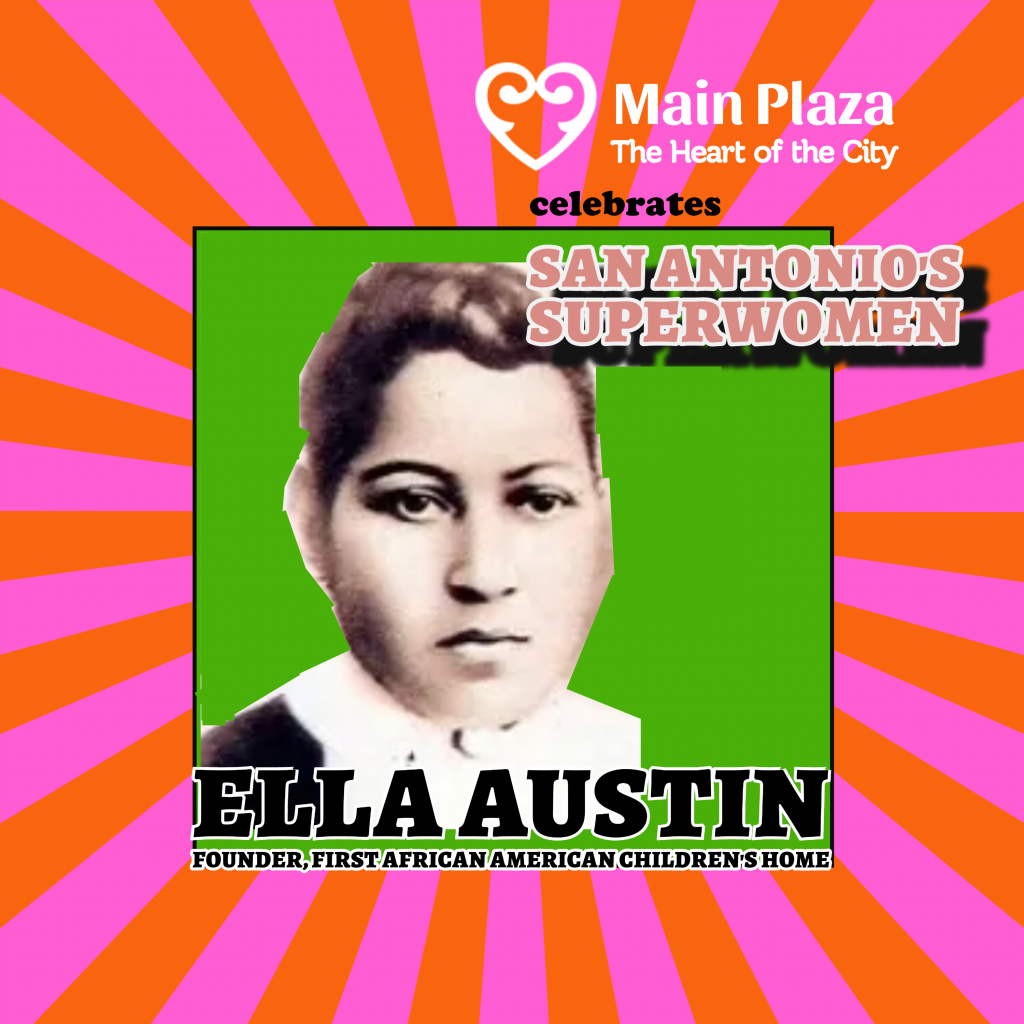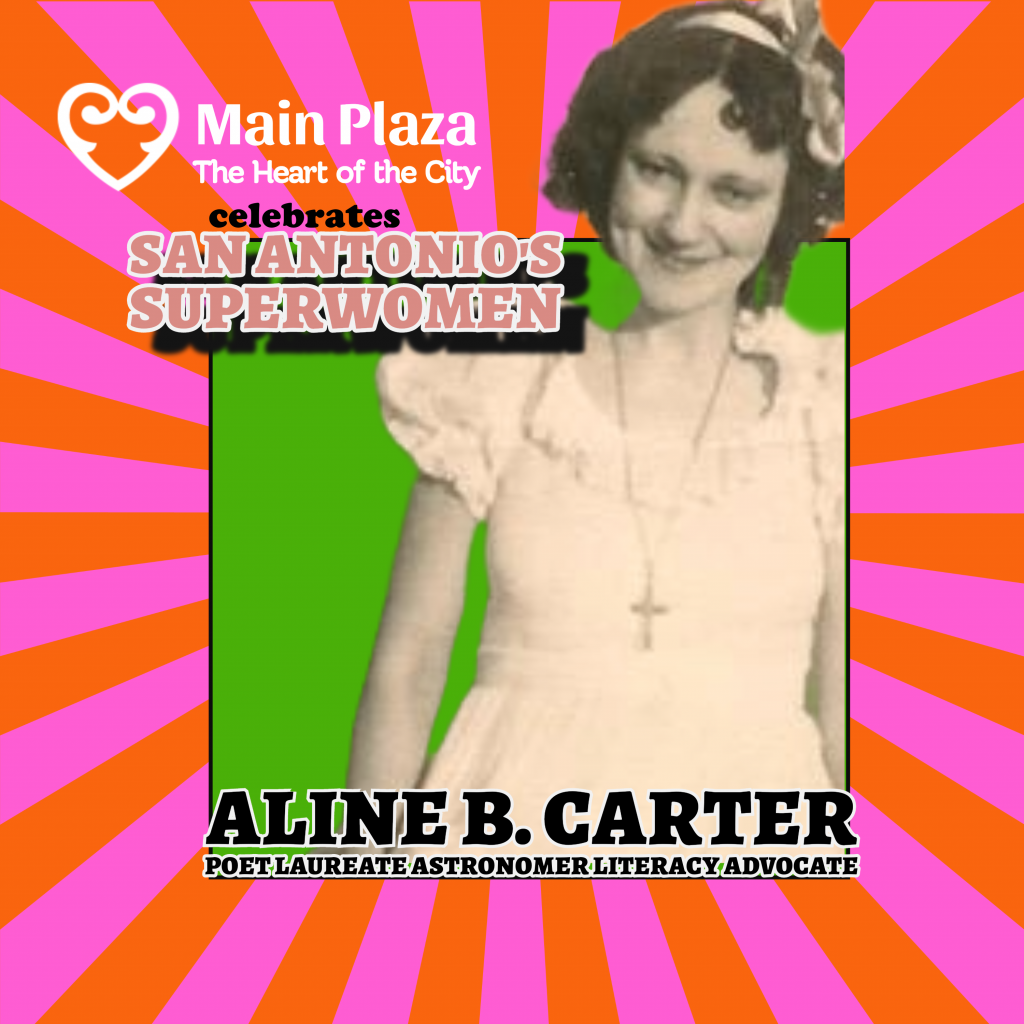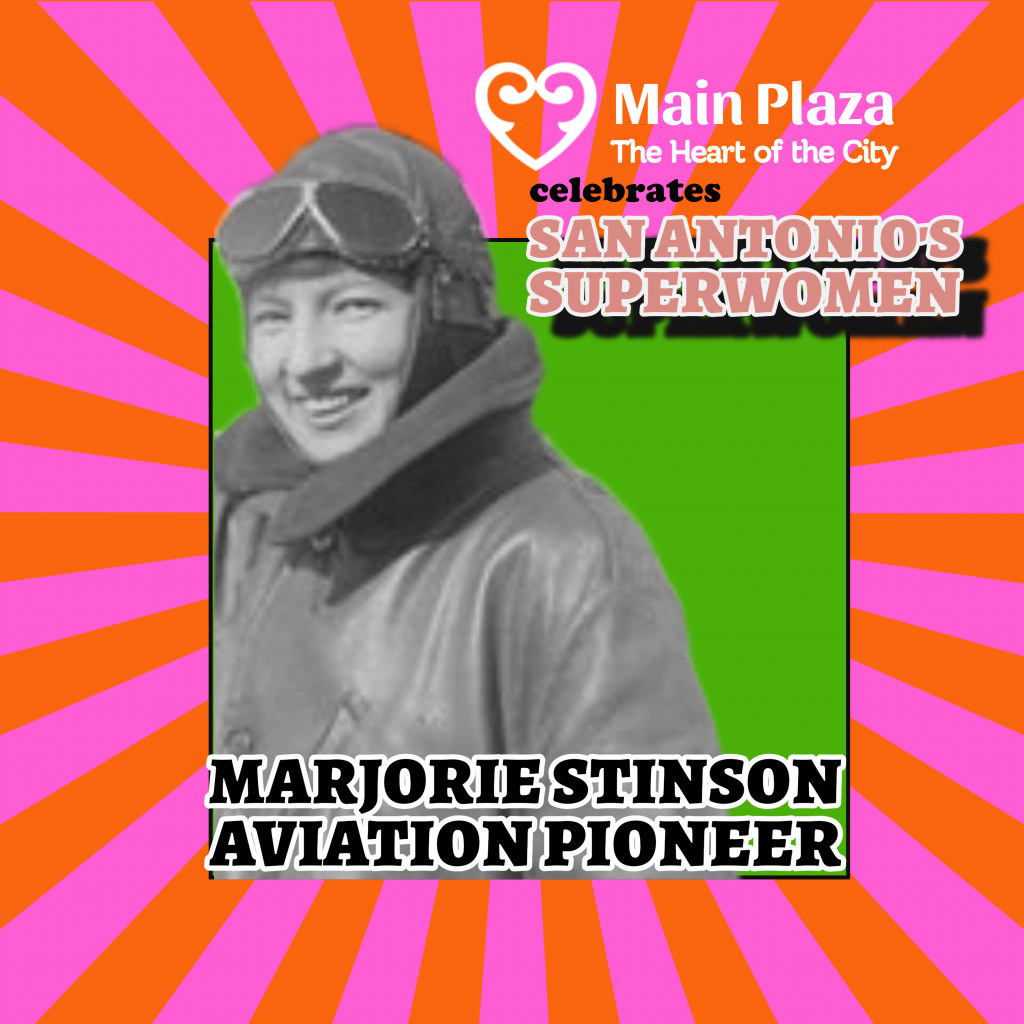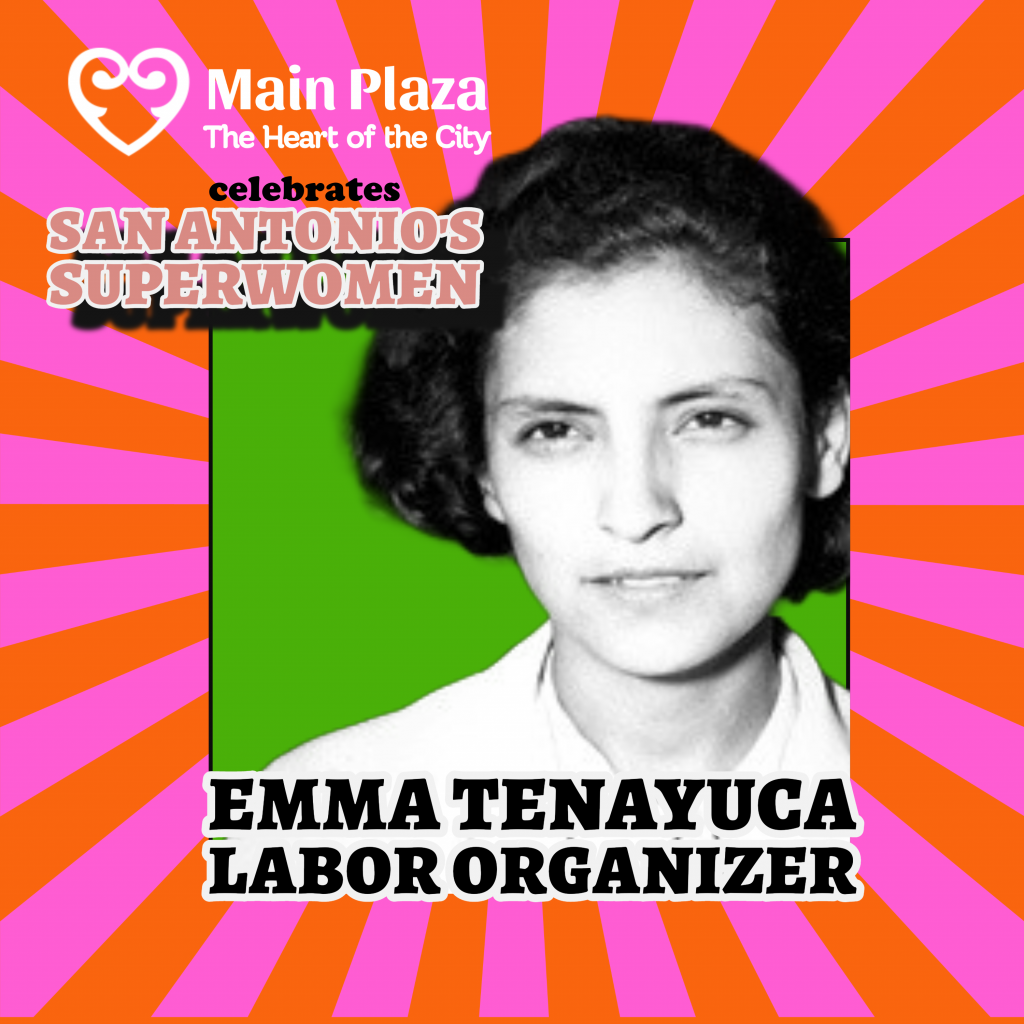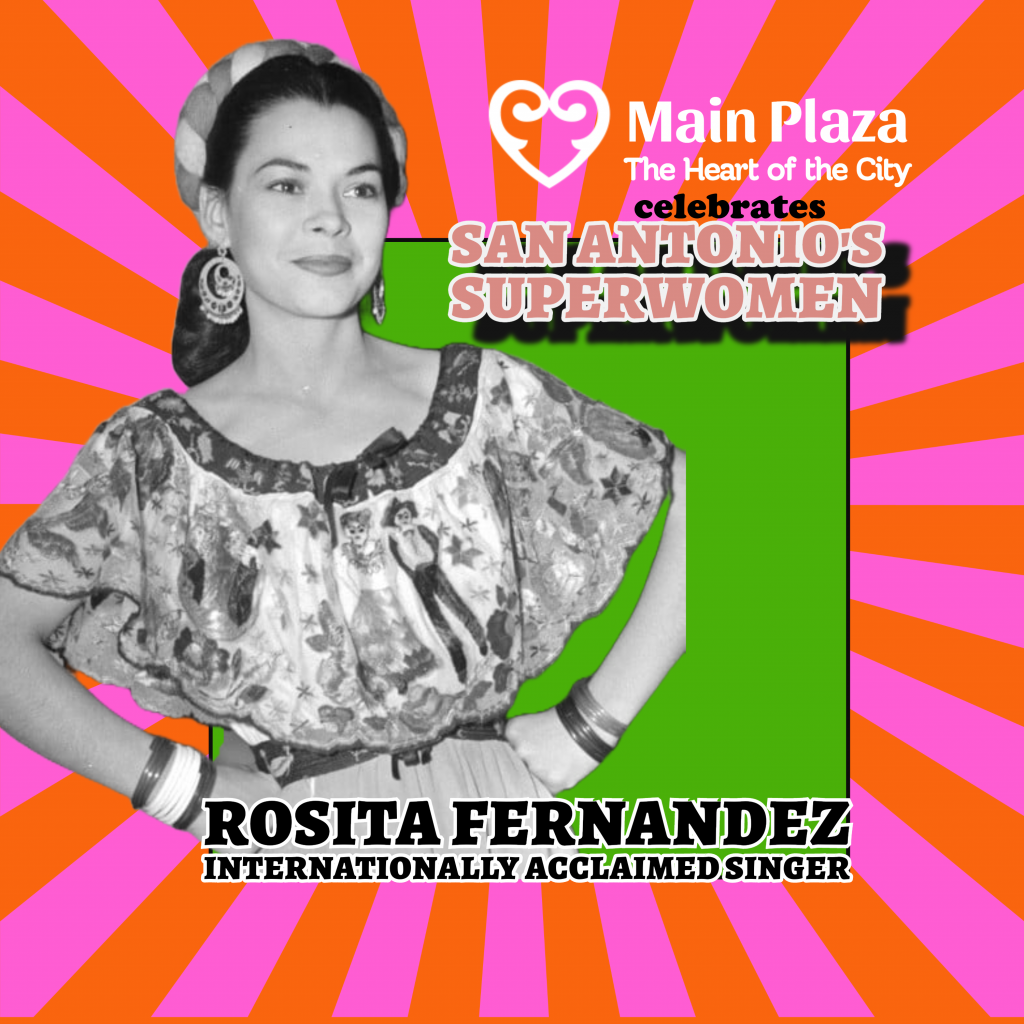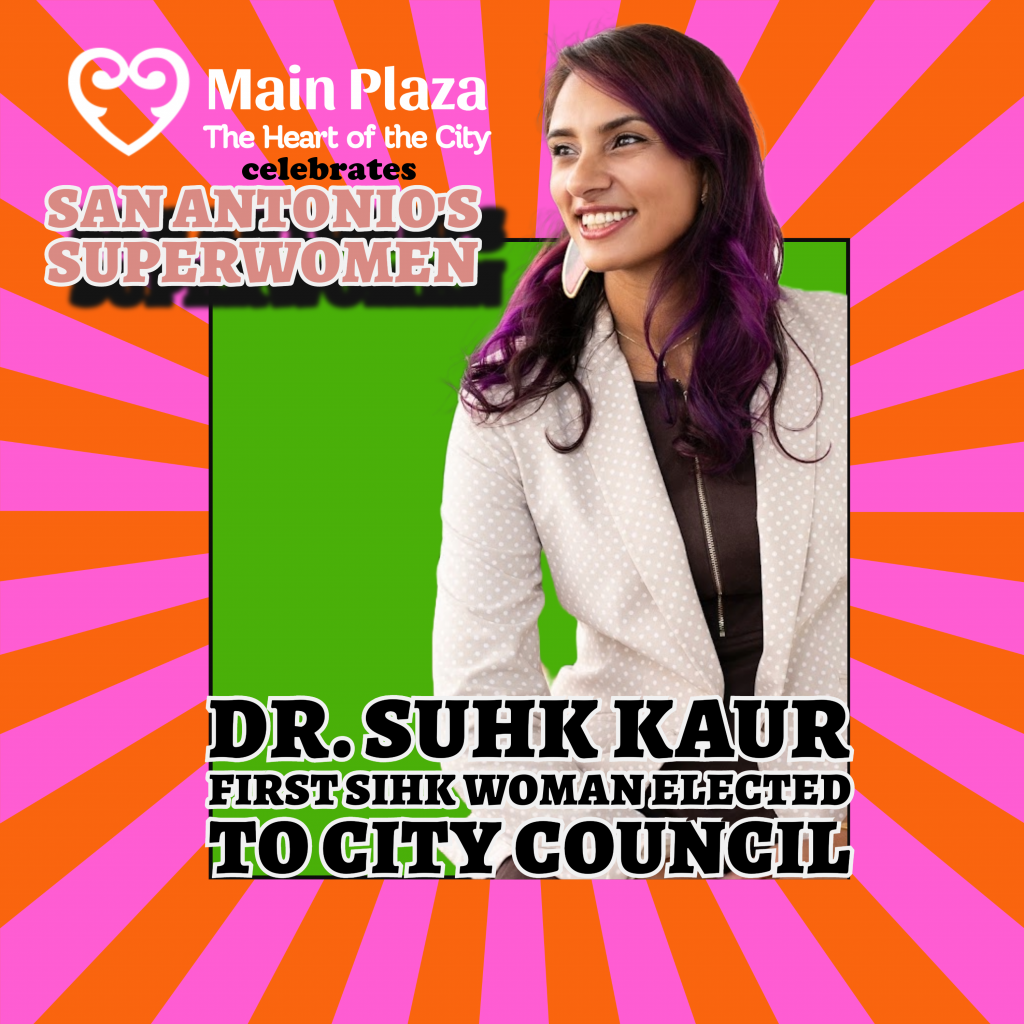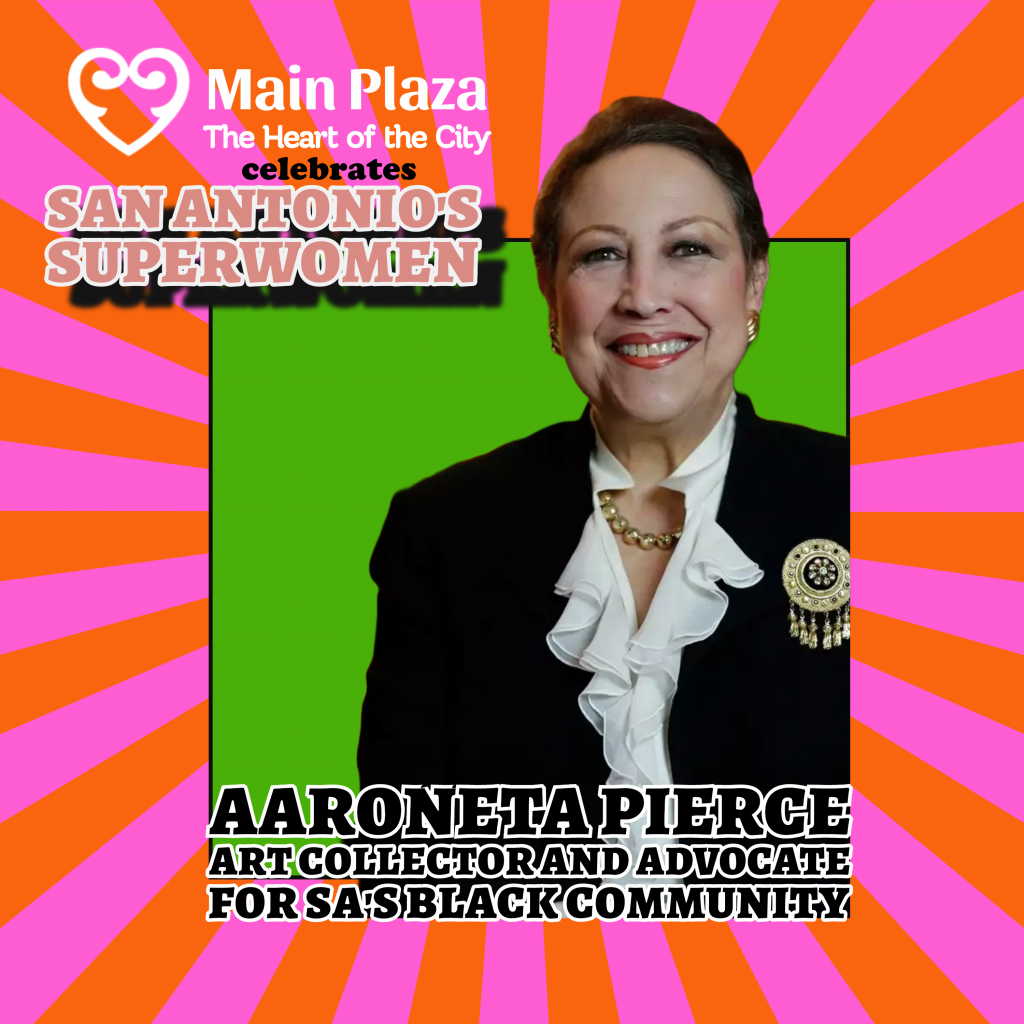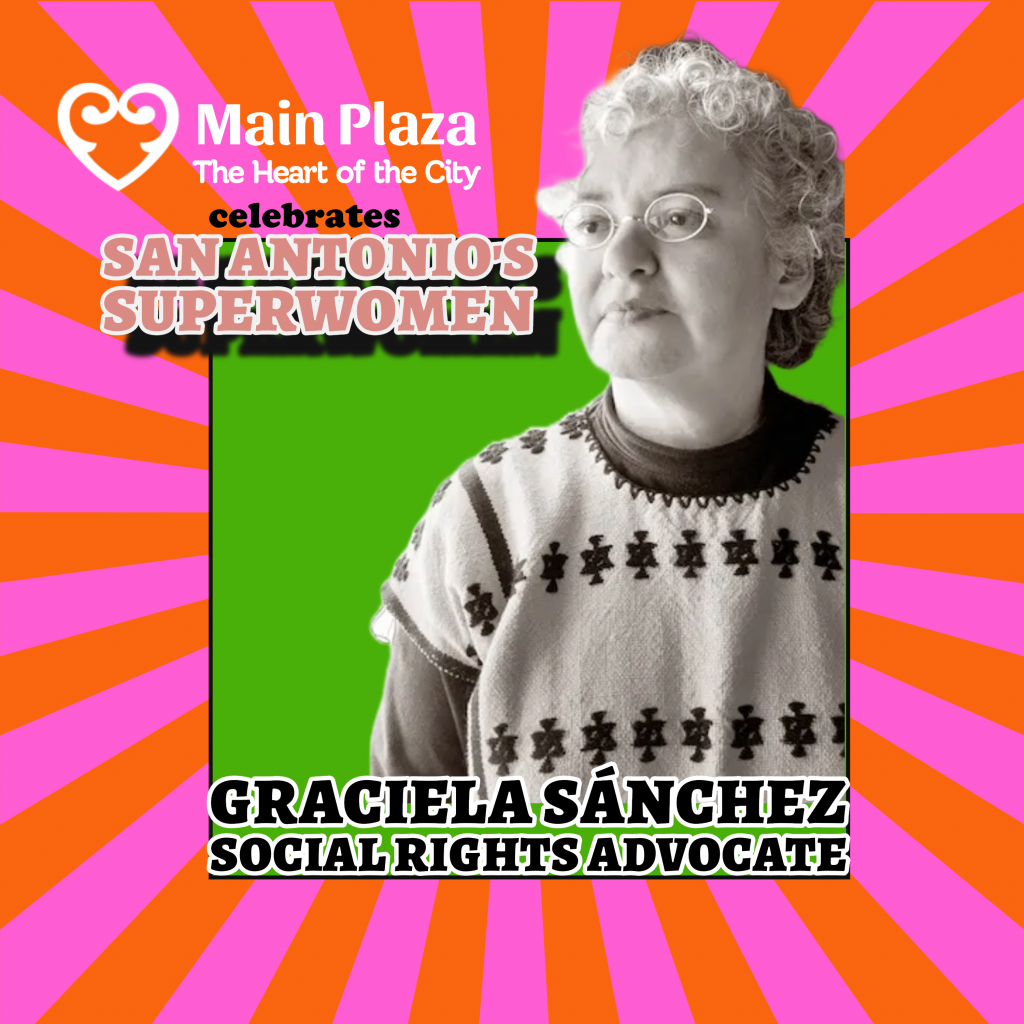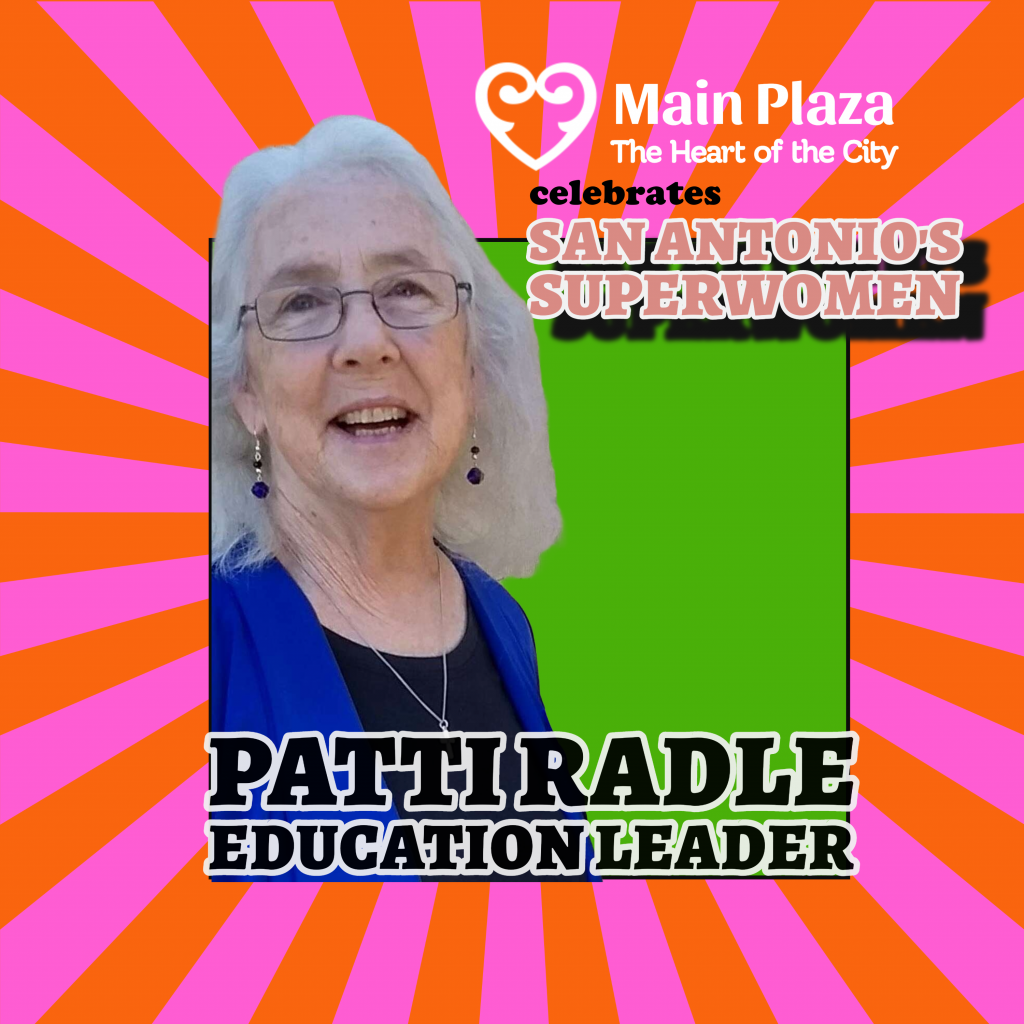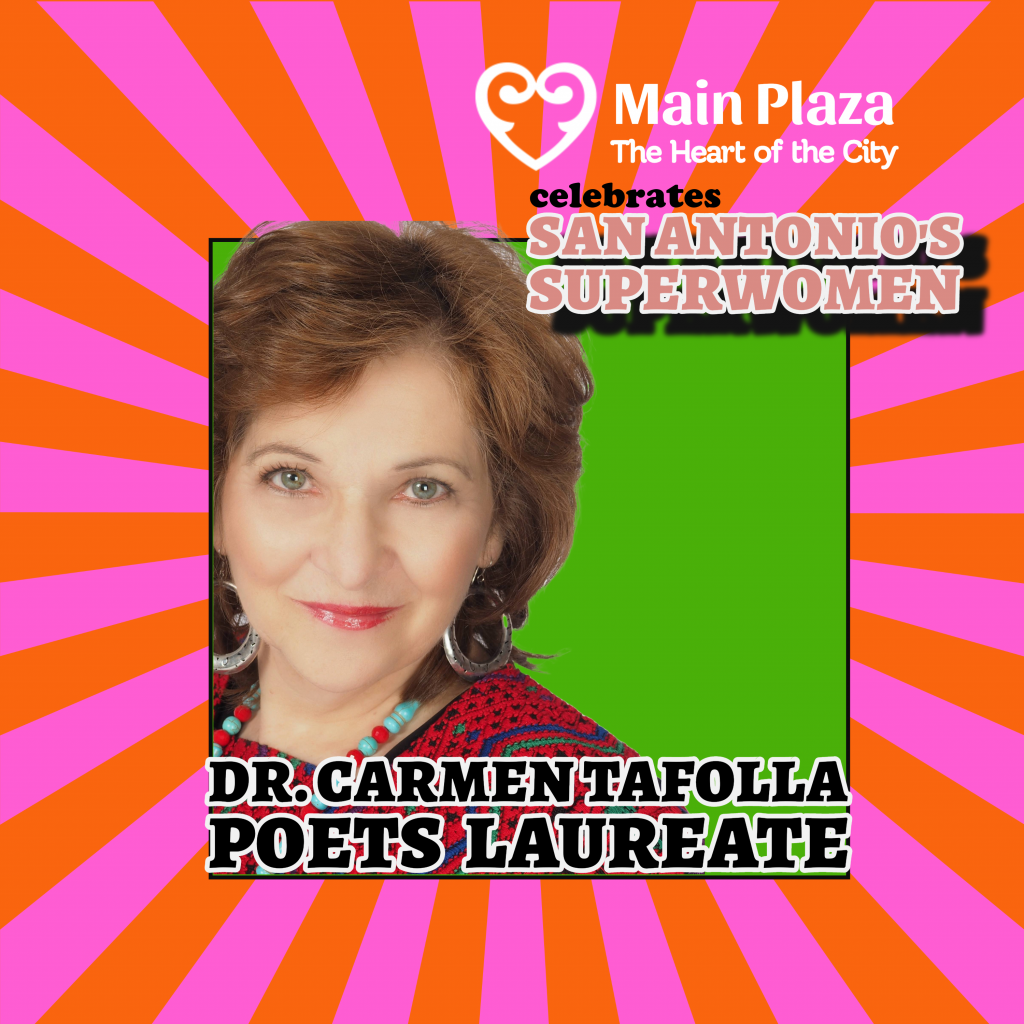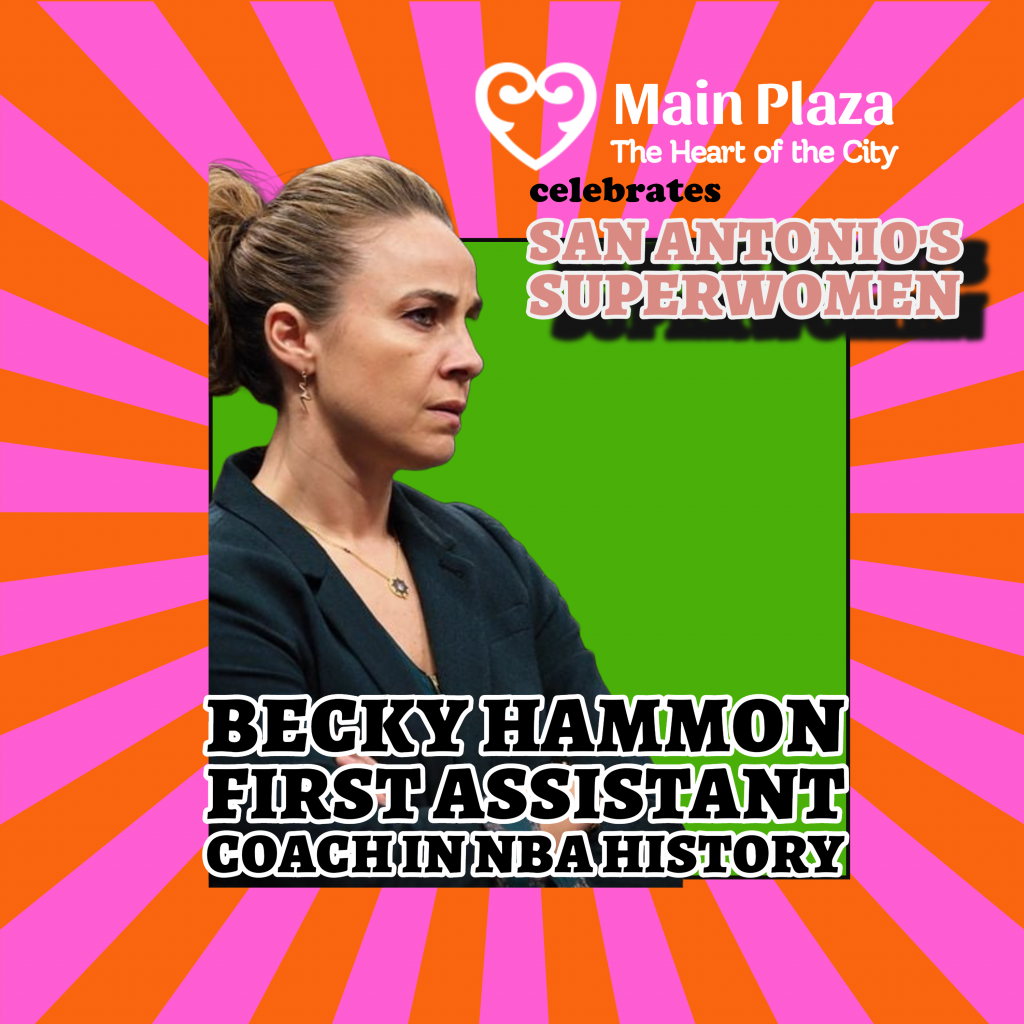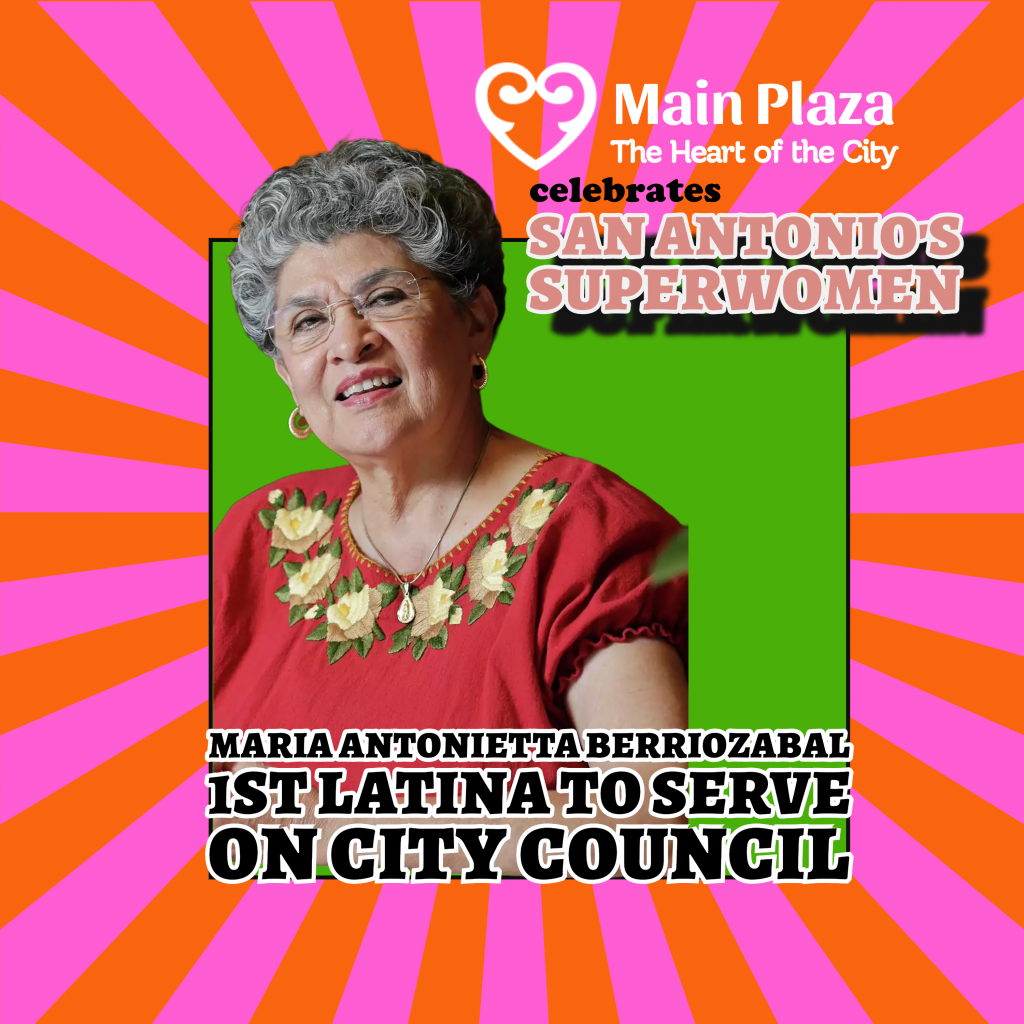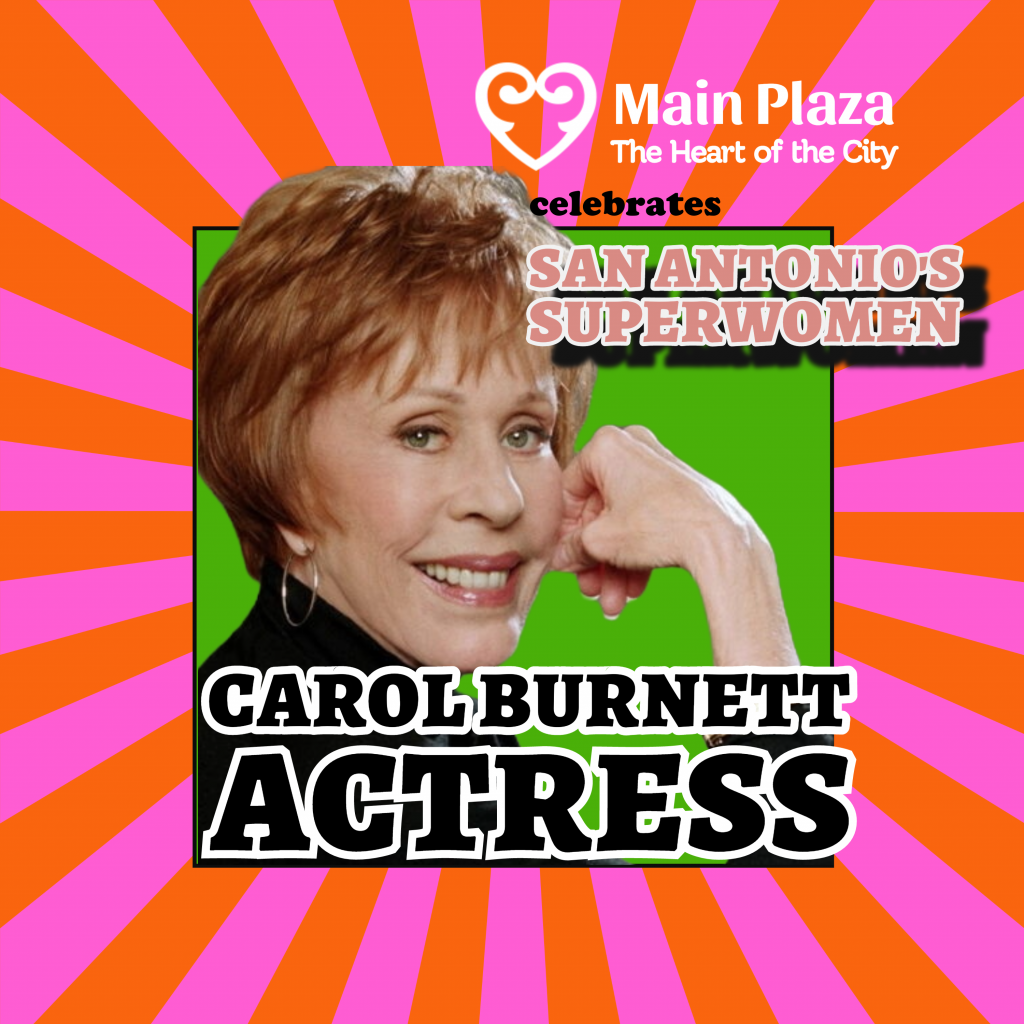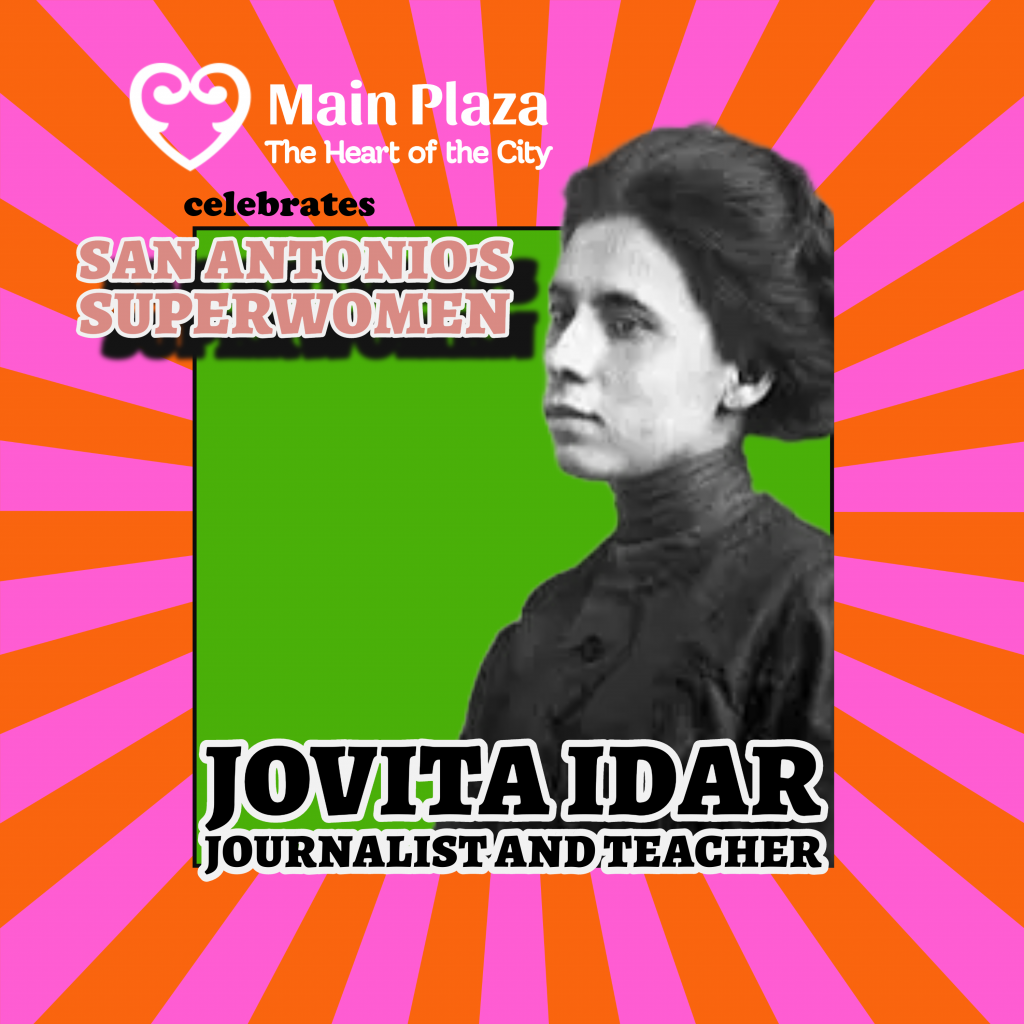Main Plaza is proud to celebrate Women's History Month through our online exhibit San Antonio's Superwomen!
San Antonio has a long history of women at the forefront of our leadership. Be it revolutions, civics, the arts, education, healthcare, or industry, the women of San Antonio have always stepped into leadership. Main Plaza is proud to highlight just a few of the women who have made an impact on this city.
1837–1924. Eleanor Brackenridge used her social power to create substantive change for women and children in San Antonio. Arriving in 1866, she joined many clubs, including the Women's Club. There, she served as President and changed their focus from literary arts towards social activism, including the need for women police matrons, parole officers, as well as labor reform and education. She is author of The Legal Status of Women, published 1911. Source: A. Elizabeth Taylor, Texas State Historical Association.
1887-1970. Ellen Dorothy Schulz Quillin began her career as a teacher at Main Avenue High School (now CAST Tech). But her love was botany. So, she set about to collect items for the Attwater Collection, housed at the school. When her collection grew too large for the space, she worked to create the Witte Museum of Natural History. There, she served as its director until 1960. (source: Cecilia Steinfeldt; Texas State Historical Association)
(1883–1950). Though Marion Koogler McNay was born in Chicago, she found herself in San Antonio after the tragic death of her husband. Marrying again, she built a large mansion and filled it with art. She began with Diego Rivera's iconic work, Delfina Flores and continued to collect American watercolor, French Impressionists, and art of the Southwest. She also worked to ensure land/water rights for the Pueblo people.. Source: Lois Wood Burkhalter, Texas State Historical Association
1861–1955. Adina de Zavala moved to San Antonio with her family in 1873. She taught school but quickly devoted herself to the unique history of San Antonio and began to meet with other like-minded women, who became The Daughters of the Republic of Texas. These women purchased the Alamo but contention grew about which parts of the complex were historical. De Zavala felt so strong that one area was indeed built before the Battle of the Alamo that she barricaded herself in the area in question. Luckily, she won her battle, as this was later proved to be correct. Source: L. Robert Ables, Texas State Historical Association.
1856-1902. Though her life was relatively short, Ella Austin had a profound effect on many in her community. Arriving in San Antonio only 15 years after a bloody civil war, Mrs. Austin saw the need for an orphanage for African American children. First, she and her husband opened their westside home. Quickly, the need outgrew this structure, so they purchased a larger home on Burnet Avenue, in the city's historically Black neighborhood. There, she founded the Progressive Women's club, who became a philanthropic organization to support the needs of the children. Because of this foresight, she created a legacy that would outlive her. The Ella Austin Orphanage continued in various buildings. Today, it is the Ella Austin Community Center. Source: Wikipedia
1892-1972. Aline B. Carter lived her life to its fullest. As a resident in San Antonio, she became the State's sixth Poets Laureate, often writing about the stars, the natural world, and peace. In addition, she was an astronomer, often inviting the community to stargaze using the telescope she installed on her third floor terrace. Source: Lety Laurel; UTSA Sombrilla, Summer 2009.
(1894–1975). In August of 1914, Marjorie Stinson became the 9th woman to receive her pilot's license. She took this achievement further by establishing the Stinson School of Flying in 1915. That same year, she became the first and only woman to be inducted into the US Aviation Reserve Corps. As such, she trained over 100 cadets of the Royal Canadian Flying Corps, preparing them for their duties during World War 1. Though the airfield's name was changed for a brief period, Stinson Airfield is recognized as the Second Oldest Airfield in the United States. Source: Gwendolyn Lockman, Texas State Historical Society.
(1916–1999). Emma Tenayuca was born in San Antonio in 1916, and became one of the city's largest advocates for women's rights and labor rights. In 1938, she organized the Pecan Sheller's Strike, in which 12,000 Mexican American women participated. The strike lasted for four months. In addition, it forced mayoral candidates to pay attention to the needs of San Antonio's Mexican-American community. In 1939, Tenayuca became President of the Texas Communist Party. However, she received death threats and was forced into exile in San Francisco. There, she grew disheartened with Communism and left the party in 1946. She became a teacher and eventually returned to San Antonio in 1991. Source: R. Matt Abigail and Jazmin León; Texas State Historical Commission.
(1918-2006). Rosita Fernandez began singing as a child in her uncles' carpas, or tent shows. At the age of 14, she began singing on the KCOR radio, and her career bloomed from there. She went on to sing and act, performing for the following U.S. Presidents: Truman, Johnson, Nixon, Carter; as well as many other Heads of State. Ultimately, she came to be known as a diplomat for San Antonio's Mexican-American community. Source: Teresa Palomo Acosta, Texas State Histocial Association.
1943-. Aaronetta Pierce began her career as a teacher. Soon, she moved to Germany. Upon her return three years later, she began volunteering for local arts organizations, namely the San Antonio Museum of Art. Then, she became pivotal in forming the San Antonio Ethnic Arts Society. Next, she served on the Martin Luther King celebration committee. As a member of San Antonio's Blue Ribbon Committee on the arts, Pierce advocated for the creation of the Department of Art and Culture. She became the first Black woman to serve on the Texas Commission on the Arts. Source: Biographical Description for The HistoryMakers® Video Oral History with Aaronetta Pierce
1922–2019. The Hon. Mayor Lila Cockrell was also a veteran of World War II, a mother, and a City Councilperson. After her career as a W.A.V.E (Women Accepted for Volunteer Emergency Service), she, her husband, and her child moved to San Antonio. Soon after, she began volunttering in the community and by 1963, she had been elected to City Council. Privately, she was a supporter of Mexican culture and women's rights. Publicly, she was known to take a more pragmatic and centrist approach. An example would be her favoring the repeal of the poll tax, but also voluntary de-segregation. She became the first female Mayor of San Antonioin 1975 and served until 1981. She was elected again in 1985 and served until 1991. Source: Fernando Ortiz, Jr.; Texas State Historical Association.
Graciela I. Sanchez has spent her life as both a beacon of light for those who are searching for equity, and a threat to those who fear it. A tireless advocate, Sanchez received her degree frin Yale University, and then returned to San Antonio to work with Southwest Voter's Registration and Mexican American Legal Defense and Education Fund. Soon, she found that her true passion was in community organizing. And so, she and other women in San Antonio founded The Esperanza Peace and Justice Center. For the past 30 years, she has dedicated herself to creating a space where marginalized communities of San Antonio can exist and build alliances. Esperanza's community or buena gente defies labels
Patti Radle has served the community since 1972 as she volunteered with her husband as the director of Inner City Development, a non-profit providing resources to San Antonio's Westside. She graduated from Marquette University with a major in Theology. She obtained her teacher and bilingual certification and a second major in English from Our Lady of the Lake University. She was recently awarded an Honorary Doctorate in Theology from the Oblate School of Theology. In addition to running a major non-profit in San Antonio, she taught elementary in SAISD for 12 years and taught high school and middle school in other school systems. She served on the San Antonio City Council from 2003-2007. In 2011, she was elected to SAISD school board, the largest school board in San Antonio. She served on the board for 12 years until 2023, with six of those years as its president. Source: MeetGreet_Sept_27_Radle
Carmen Tafolla is a poet, author, teacher, educational consultant. A native of the West-Side barrios of San Antonio, Texas, Tafolla earned a BA, MA, a PhD from the University of Texas, Austin. In 1973, she became Director of the Mexican-American Studies Center at Texas Lutheran College where she initiated, among other projects, the El Premio Roberto Salinas Award to recognize students who have worked to promote human understanding and cultural harmony.
The recipient of many honors, she became the poets laureate of San Antonio. Tafolla has published five books of poetry, eight children’s picture books, seven television screenplays, one non-fiction volume, and a collection of short stories.Tafolla has held numerous faculty and administrative positions at universities throughout the Southwest. In 1999, the President’s Peace Commission of St. Mary’s University selected Tafolla for its Art of Peace Award for writing which promotes peace, justice and human understanding. Source: University of Texas at San Antonio.
Hammon then joined the WNBA and became one of the great players in that league, playing through the 2014 season as a point guard. She initially played with the New York Liberty, but also played for the Tennessee Fury and Colorado Chill in the NWBL (National Women’s Basketball League), and eventually playing with the San Antonio Silver Stars. During her WNBA career, Hammon was a first-team All-WNBA selection in 2009 and was the seventh WNBA player to score 5,000 points, surpassing that milestone in 2011. While playing in San Antonio Hammon began attending practices with the NBA San Antonio Spurs, and came under the influence of Spurs’ coach Gregg Popovich. In August 2014 Hammon made history when Popovich asked her to become a full-time assistant coach for the Spurs after she retired at the end of the season. She thus became the first female to be a fully recognized assistant coach in the NBA. In July 2015 she coached the Spurs team in the NBA Summer League, and led them to the title, becoming the first woman head coach of an NBA team at any level.
is a child of immigrant parents, and she spoke Spanish at home until she learned English in school. Elected in 1981, she was the first Hispanic woman to hold a city council post in a major Texas city. She held that position for ten years. . Her 1991 campaign for Mayor attracted national attention. In all, she had a successful 40-year career in public service. She served on the San Antonio City Council, the Inter-American Commission of Women of the Organization of American States and the participated in the 1995 World Conference on Women, to name a few of her accomplishments. Source: Emily Mathis, The Texas Observer.
Though she only spent her early years in San Antonio, she is one of our most proud accomplishments. Carol Burnett was born in San Antonio in 1933 and moved to Hollywood where she took acting classes. Her comedic variety show, The Carol Burnett Show was named in 2007 by TIME magazine as one of “100 Best Television Shows of All Time,” The Carol Burnett Show ran for 11 years, averaged 30 million viewers per week, and received 25 Emmy Awards, making it one of the most honored shows in television history. As a highly acclaimed actress, Ms. Burnett has been honored with Emmys, Golden Globes, People’s Choice Awards, the Horatio Alger Award, an Ace Award, the Peabody, and a Grammy. A Kennedy Center Honoree, the recipient of the Kennedy Center Mark Twain Prize for Humor and the Presidential Medal of Freedom; was inducted into the Television Hall of Fame, and has a star on the Hollywood Walk of Fame. Source: Finding Your Roots, PBS.
Jovita Idar was born in 1885 in Laredo, Texas. She attended Holding Institute where she earned a teaching certificate in 1903. Idar started working for her father’s newspaper La Crónica, .She often wrote articles speaking about racism and supporting the revolution in Mexico. In 1911, Idar and her family organized the First Mexican Congress to unify Mexicans across the border to fight injustice.In October of 1911, she founded and became the first president of La Liga Feminil Mexicaista (the League of Feminist Mexican Women) A few years later, Idar decided to go to Mexico to take care of the injured during the Mexican Revolution. She served as a nurse and eventually joined a group similar to The Red Cross called La Cruz Blanca. Soonafter, she returned to Texas and wrote for El Progreso. One of her articles protested President Woodrow Wilson’s decision to send Unites States troops to the border. The Unites States Army and the Texas Rangers did not like that she spoke out, so they went to the offices of El Progreso to shut it down. When the Rangers arrived, Idar stood in front the door and would not let them in. However, they returned later and forced El Progreso to shut down. Even though the Rangers shut down El Progreso, Idar continued to write and advocate for the fair treatment of Mexican-Americans. A few years later, Idar married Bartolo Juárez and moved to San Antonio, Texas. Here, she promoted equal rights for women. She also became an editor of a publication for the Methodist Church called El Heraldo Cristiano. Idar remained committed to her community by volunteering in a hospital as an interpreter for Spanish-speaking patients, and started a free kindergarten for children. She was known for saying, “when you educate a woman, you educate a family.” Kerri Lee Alexander, National Women's History Museum.
Naomi Shihab Nye was born on March 12, 1952, in St. Louis to a Palestinian father and an American mother. During her high school years, she lived in Ramallah in Palestine, the Old City in Jerusalem, and San Antonio, Texas, where she later received her BA in English and world religions from Trinity University.
Nye is the author of numerous books of poems, most recently Cast Away: Poems for Our Time (Greenwillow Books, 2020). She is also the author of several books of poetry and fiction for children, including Habibi (Simon Pulse, 1997), for which she received the Jane Addams Children's Book Award in 1998.
Nye gives voice to her experience as an Arab American through poems about heritage and peace.
Nye’s poems and short stories have appeared in various journals and reviews throughout North America, Europe, and the Middle and Far East. She has traveled to the Middle East and Asia for the United States Information Agency three times, promoting international goodwill through the arts.
Nye’s honors include awards from the International Poetry Forum and the Texas Institute of Letters, the Carity Randall Prize, the National Book Critics Circle Lifetime Achievement Award, and four Pushcart Prizes. She has been a Lannan Fellow, a Guggenheim Fellow, and a Witter Bynner Fellow. In 1988, she received the Academy of American Poets’ Lavan Award, judged by W. S. Merwin. Source: poets.org

